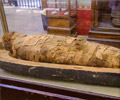- Virtopsy - (https://www.ncbi.nlm.nih.gov/pmc/articles/PMC3826044/)
What are the Types of Post-mortem examination / Autopsy examination
Autopsies fall into three categories:
- Medico-Legal Autopsy or Forensic or coroner's autopsies
- Anatomical or academic autopsies
- Clinical or Pathological autopsies
Medico-Legal Autopsy or Forensic or Coroner's autopsies are performed to identify the cause and manner of death and to identify the deceased. They are generally executed, as dictated by applicable law, in cases of violent, suspicious or sudden deaths, deaths without medical assistance or during surgical procedures. It is performed by a trained medical officer or Police Surgeon.
Clinical or Pathological autopsies are executed to diagnose a particular disease or for research purposes. They shed light into the pathological processes that lead to death of the person. Clinical autopsies are sometimes performed to assess the standard of care of hospitals. It is done by a pathologist.
Anatomical or academic autopsies are performed by students of anatomy for study purpose. This is usually possible when a person has given permission in advance of their death.
Virtual or medical imaging autopsies
Virtopsy is a term that combines the words "virtual" and "autopsy," and it uses imaging modalities such as computed tomography (CT), magnetic resonance imaging and so on for the purpose of determining the cause of death. Virtopsy can be used in place of normal autopsy for broad and systemic examinations of the entire body since it is less time consuming, assists in better diagnosis(4✔ ✔Trusted Source
Virtopsy
Go to source).













